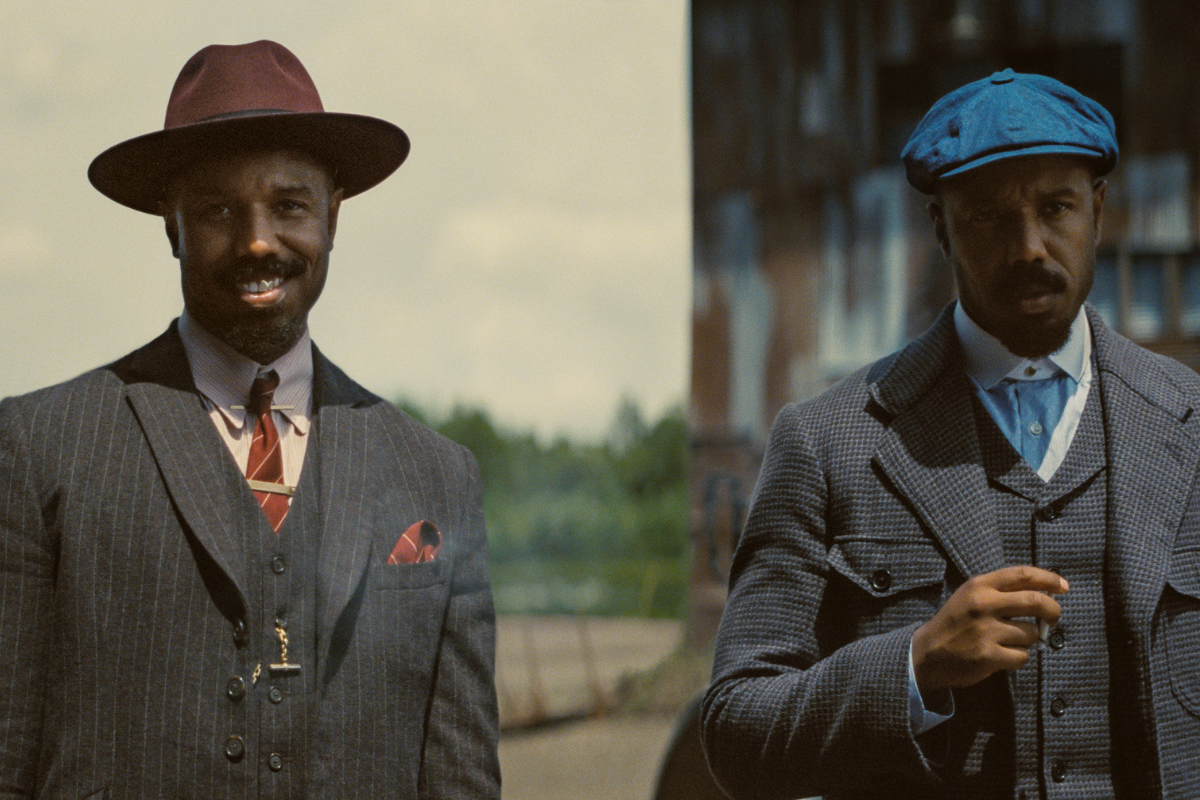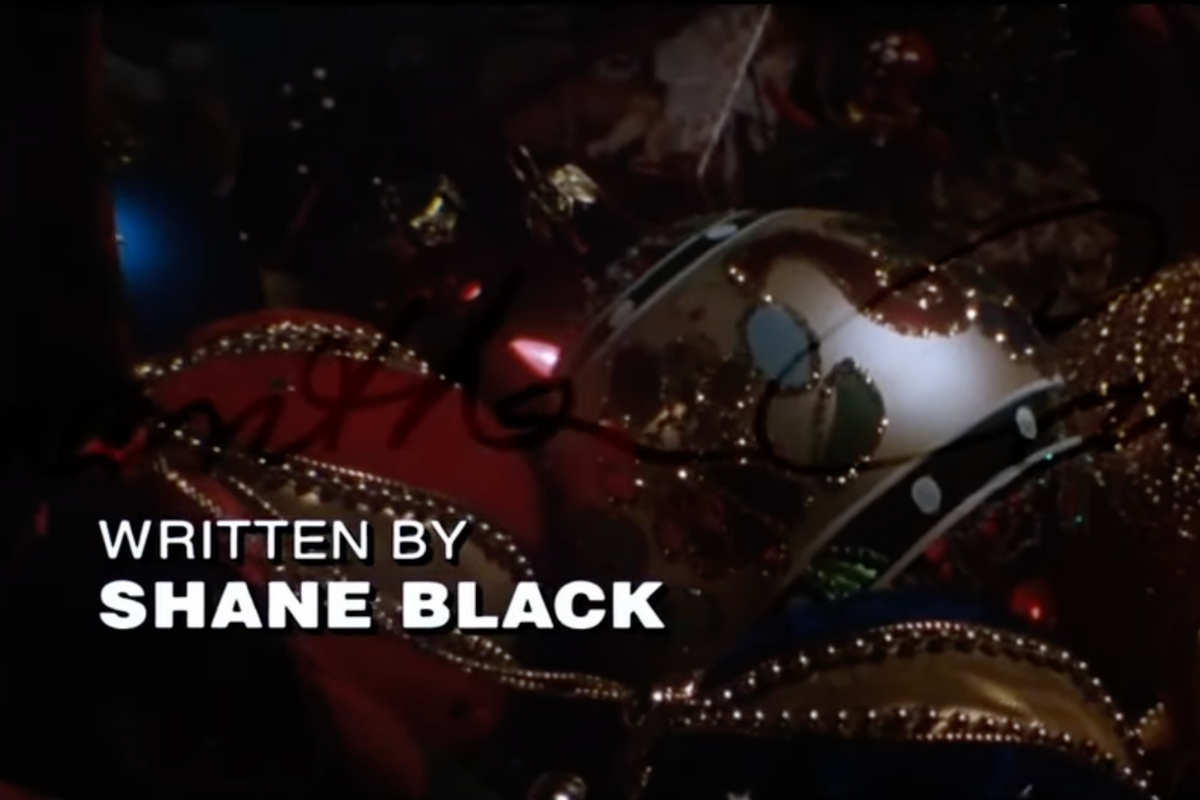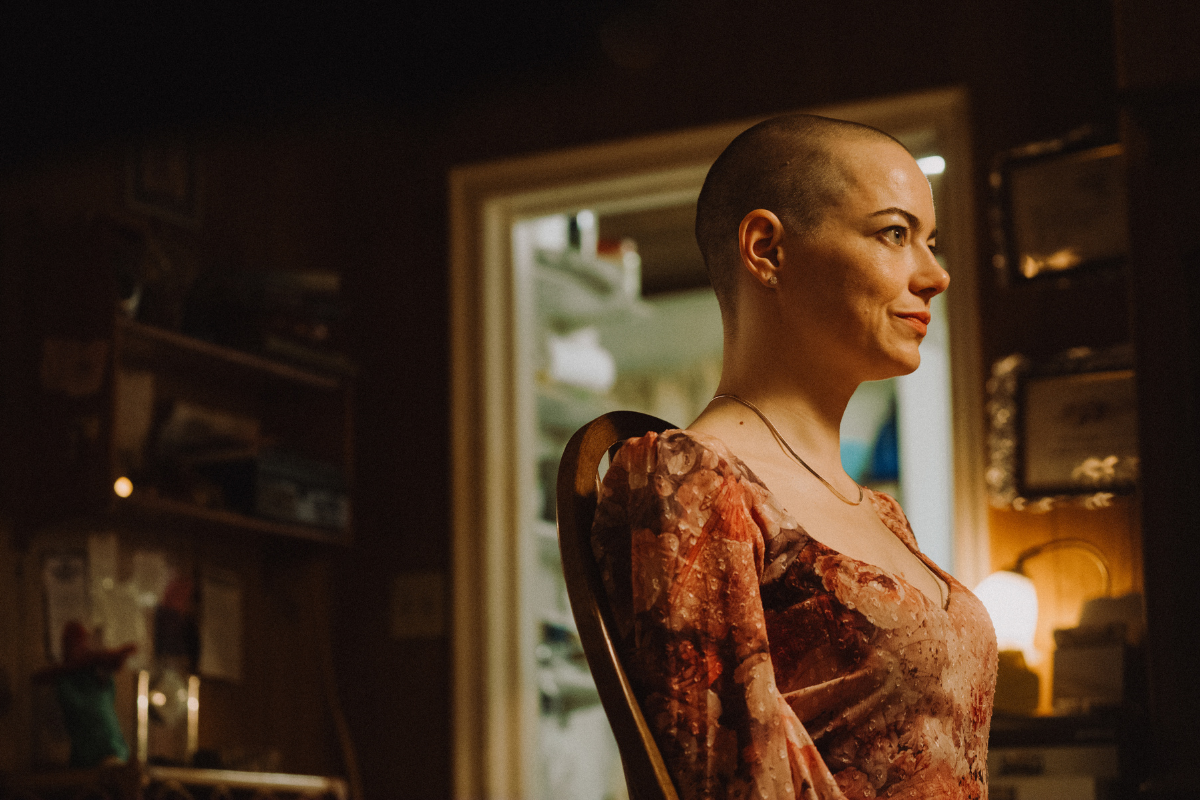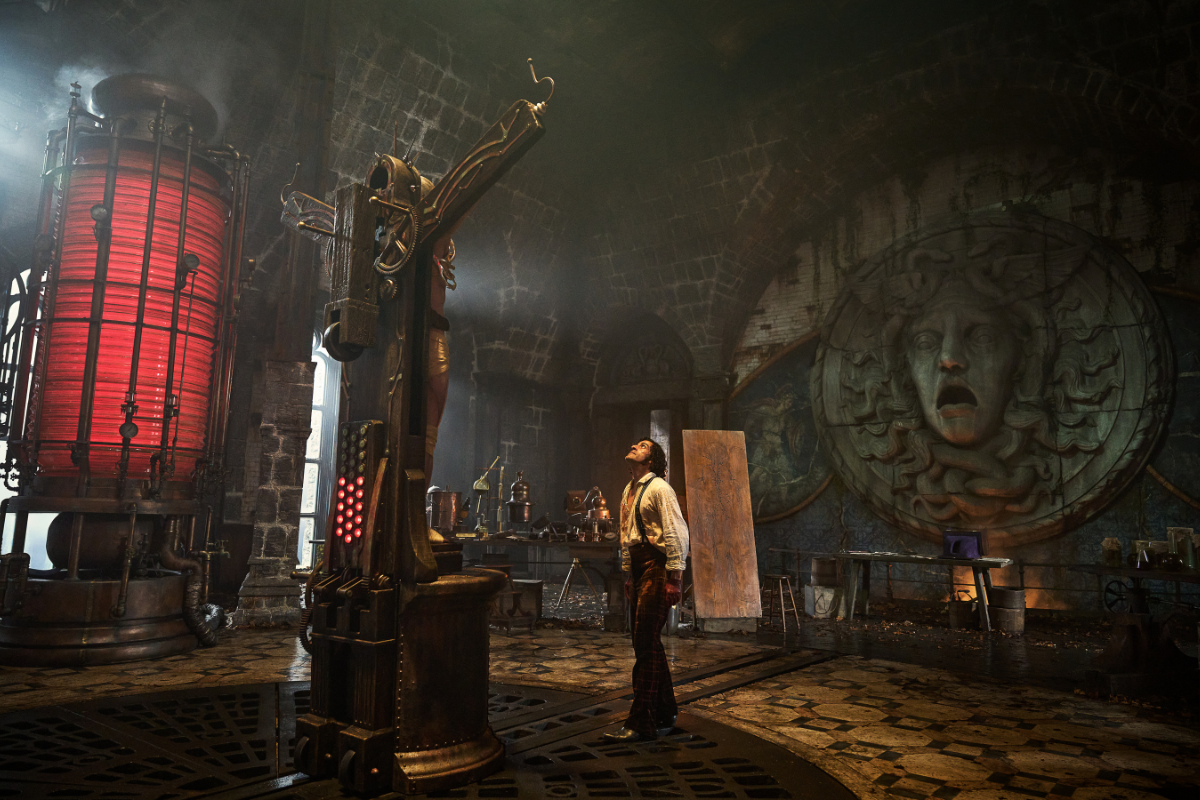BREAKING & ENTERING: The Art of Surprise Part 2
Barri Evins’ on using The Art of Surprise in concept, execution, expectations, and with tension and suspense to lift your work to a new surprising new level.
Barri Evins’ on using The Art of Surprise in concept, execution, expectations, and with tension and suspense to lift your work to a new surprising new level.
In case you missed it, a few months back I wrote a column on The Element Of Surprise, where I endeavored to explain why our story-loving brains adore and are quite literally turned on by a good surprise and how you can use the Art Of Surprise in your story to excite jaded readers, lure busy execs, and stand out to audiences bombarded with choices.
Turns out, I managed to surprise myself, by teasing that I was leaving you on the edge of your seat, and then completely forgetting that I’d promised you a Part 2! Oops...
So, here’s more on how to use The Art of Surprise – even in genres plagued clichéd expectations – as well as ways to utilize tension and suspense to boost surprise.
Surprise: Exciting Execution
How many times have we heard, “There are no new stories”?
Enough times to make that saying a well-worn cliché in and of itself.
I don’t think it matters whether you believe this or not.
Maybe there are no new stories, but stories can and have been told time and again with great success.
My favorite example: The Three Musketeershas been filmed at least once and often twice every single decade since the invention of the medium over 100 years ago – first as a silent film in 1903, then a silent short by Edison Studios (Yes, that Thomas Edison! The inventor of the light bulb had many other big ideas, including a film studio which produced nearly 1,200 films), then endless versions in mediums: plays, musicals, TV series, video games, board games and even animated films (starring Mickey, Donald and Goofy, of course) and even a 3D version directed by Paul W. S. Anderson in 2011.
Mind blown? Hang on, dear reader. Even novelist Alexandre Dumas noted that his 1844 book was based on Mémoires de Monsieur d'Artagnan, a historical novel by Gatien de Courtilz de Sandraspublished in 1700!
So who cares if there are no new stories?
The key is choosing timeless stories.
At the heart of all the versions of The Three Musketeers are the idea of a simple young man who leaves home on a quest to join an elite force, and of the resonant theme of friendship and loyalty: "One for all, all for one." The timelessness of the concept and of the message allows it to be told time and again.
I talk a lot about Hooky Ideas in my screenwriting seminars, speaking engagements and with my consult clients because they combine the familiar and well-loved with the unexpected, making them appealing and upping their potential to move forward in the marketplace. And here, in “Damn, I Wish I’d Thought of That!”including George Lucas' thoughts on the power of ideas.
A Hooky Idea immediately intrigues our minds. It makes you want to know more, gets you hooked and sticks with you. When it comes to story, human brains, developed over millions of years of telling stories, love to be surprised by something we never saw coming. We adore clever twists, and our minds are turned on by a completely new spin on something we’ve seen before.
A Hooky Idea puts images, feelings, tone into your mind in just a very few words. When you hear a hooky idea, you know what the movie will feel like.
Here’s a handy Check List to help you tell if you have a Hooky Idea.
Your task as a storyteller is to bring your audience something new, even if it’s a spin on a well-known story. What we love the most is when a story marries the well loved and the unexpected.
It reminds me of the traditional poem about what a bride should wear on her wedding day for good luck: ”Something old, something new, something borrowed, something blue.” Powerful ideas aren’t so dissimilar.
Something Old: An element of the story whether it’s the setting or the character or the basic storyline has been around before. It’s familiar to us.
Something New: Taking that familiar element and incorporating it into something we haven’t see before is a powerful combination.
Something Borrowed: Young writers sometimes struggle to be utterly original while experts claim that there are no new stories. Borrowing something from stories that we have loved in the past actually strengthens stories. Those classic paradigms are borrowed again and again because they work.
Something Blue: I bet you think I’ll trip myself up here. But the point of something blue is to challenge the bride to come up with something unique to her within a constraint – it has to be blue. That imposes a limitation – and limitations are good. They force us to be creative and make the end result distinctive and uniquely representative of us.
Watch Something Old, Something New here.
What is the “Something Blue” that only you can bring to your story? That is what makes your story fresh and unique.
Discovering your Personal Thematic is an essential step in your development as a storyteller because it helps you find and focus on your “Something Blue.”
It can power your writing by guiding your choices at every juncture of the writing process. It makes your stories engaging. It ensures your story is unique. It can prove you are a writer with a distinctive voice, the ultimate way to draw industry interest to your work. Here’s a great exercise to help you uncover your Personal Thematic.
Surprise in Formulaic Genres
Writing rom-coms, horror films and action movies carry some of the highest added burdens of genre conventions:
The guy must work hard to get the girl.
The “bad” teens will wind up murdered by the killer.
The villain has the hero trapped – but our protagonist cleverly turns the tables.
If you are working within the framework of a very specific and well-defined genre, how do you surprise your audience with something new? The more you understand the conventions of the genre, the better you can use them to your advantage.
I’ve written about the importance of delivering on audience expectations in past columns.
You might think genre conventions limit you, but limitations force us to become better – more creative, cleverer, even innovative. They can inspire you to take something familiar and elevate it to a new level. The specifics – your unique choices – make the familiar fresh and entertaining.
We’ve endlessly seen the action hero at the mercy of the villain and then turn the tables. “Before I kill you Mr. Bond, I’m going to take a few minutes to reveal my nefarious plot…” You know what’s going to happen next. It’s how that unfolds that sets it apart by bringing something unique, clever and surprising to the formulaic and familiar.
We love seeing Bond in an inescapable situation cleverly turn the tables and thwart the seemingly invincible villain. There are 26 films in the James Bond franchise– the longest running film series in history, having begun 1962 – that’s more than five decades and six different actors (and counting) portraying the cool, calculating and charismatic secret agent.
Conventions are conventions because they work.
Think of the rom-com with its inevitable “run to the airport” – whether in a station wagon packed with all your friends racing through the streets of London, astride a white limousine, or rushing to the top of the Empire State Building.
Let’s look at what lies beneath this expectation that makes it so satisfying for audiences:
Invariably in rom-coms the “run to the airport” is the externalization of the hero’s internal arc. It demonstrates that the hero has been changed by the events of the story and, as a result, now realizes that he really truly loves the heroine and must tell her right away as the clock ticks down to the moment when it will be too late!
Note: Sorry gentlemen, but historically, it is the guy in a rom-com who is the last to have this “Gee, I could have had a V-8!” head-slapping moment late in the film. The heroines in rom-coms simply come to this realization sooner. So, when the hero runs to the heroine, literally rushing to beat the clock, it is satisfying to the audience.
The “run” part of the “run to the airport” springs from our desire to see the hero put forth physical effort to get what he wants, i.e., the girl. The ticking clock adds tension and highlights the stakes. If it were too easy, it simply wouldn’t be engaging or satisfying.
I once developed a project with a writer that had a very clever run from the airport. A little spin that felt fresh while delivering on our desire to see the hero’s growth demonstrated.
So long as you analyze and understand what underlies our expectations, you can fulfill them in a way that is distinctive to your story, your characters and your point of view.
The enticement of the satisfying cliché combined with your unique vision will make your script special and memorable.
It’s the one-of-a-kind variation on the familiar that you create.
Surprise Booster! Tension and Suspense
While the Jack-in-the-Box may astonish young children time and again, once we are old enough to know what is coming, we completely lose the pleasure of the anticipation, along with the accompanying tension and suspense.
How do you replicate that delicious sensation of tension and suspense we felt as children in your story?
Keep Us Always Wanting to Know: What Happens Next?
According to screenwriter/director Shane Black, “Every story is a thriller.”
Simple advice on the surface, but brilliant.
Keeping the audience on the edge of their seats – dying to know what happens next. It’s about the artful interplay of tension and suspense that keeps your reader and the audience eager to know what happens next in any genre.
The dopamine rush of the effective and impactful twist is intense. Which also explains why we hate spoilers. I’m the first one to shove my fingers in my ears and holler, “Neener, neener, neener.” Many years as an executive and a producer meant all too often I had read the manuscript or the screenplay before seeing the film. This made me vigilant about enjoying the impact of experiencing something for the first time.
Maximizing Surprise: Interweave Tension and Suspense
When I was studying directing in college, I was taught that effectively utilizing tension and suspense was like standing in front of an audience playing with a rubber band. You stretch out the rubber band – creating unease in the mind of the audience that something bad is going to happen – it might snap with a sharp sting – then bring it back in. You stretch it out further than before, ratcheting up the audience’s apprehension, then bring it completely back in, giving them a chance to catch their breath, but now anxious about what will happen next. Suddenly, you pull the rubber band twice as far as ever before. Escalation! The audience is riveted, holding their breath, anticipating the painful snap – fully engaged even thought they won't actually experience the pain!
Don’t Spoil The Surprise: The Right Touch of Foreshadowing
Audiences are amazingly smart. Don’t spoon-feed them. Put our brains to work by making us add 2 + 2 – they love the challenge. Leave out what’s unnecessary, and what we can readily fill in without you spelling it out. Avoid repetition, such as both telling and showing information.
Just the right amount of foreshadowing can up suspense and build tension, heightening the surprise. If the audience gets ahead of the story, if they can predict what will happen next, you’re not turning on their brains. Too much foreshadowing signals what’s going to happen next and then leaves us waiting around for what we’ve already figured out to unfold. This dissipates tension and suspense and makes for dull, slow-paced stories.
Juxtaposition: Artfully Up Tension and Suspense to Boost Surprise
Juxtaposition is a key tool in creating suspense. How you put events together in relation to one another can create feel fresh and up the tension.
Here’s one of my favorite examples from Quentin Tarantino’s Pulp Fiction:
Bruce Willis, rushing to leave town because hired killers are out to get him, is hell bent on getting his father’s Gold Watch from his apartment despite knowing it must be staked out. He takes every precaution, paranoidly approaching the building and make it inside. All’s clear! He heads into the kitchen, relived, and decides to make a pop tart. Drops a pair into the toaster. Then he notices a submachine gun on the counter. John Travolta emerges from the bathroom carrying a book – he’s been reading on the toilet, killing time while waiting for Bruce. For a moment, it’s a silent standoff. Both characters are shocked. No one moves. Suddenly the silence is broken by the sound of the toaster popping up. Bruce immediately snaps out of it and opens fire, killing Travolta with his own gun.
Surprising? Yup! On so many levels.
It plays with tension and suspense. It adds wry, offbeat humor but remains utterly human and rootable at the same time. Tonally, it is both dark and funny at the same time. The characters are quirky but their motivations are clear and relatable. An up and down ride that plays with tension, suspense, juxtaposition and surprise without a single word of dialogue. Watch here.
Use the tools of The Art of Surprise – the choice of your concept and how you execute it, the deep understanding your audience’s expectations so you can both spin them and satisfy them and the artful use of tension and suspense. Together they can lift your work to a new surprising new level.
Share your favorite movie surprise moments in the comments below!
Get more tips from Barri Evins with her on-demand webinar
Loglines, Queries & Synopses:
How to Take Your Script from Being Ignored to Getting Noticed!
Barri Evins draws on decades of industry experience to give writers practical advice on elevating their craft and advancing their career. Her next SCREENWRITING ELEVATED online seminar with 7 monthly sessions plus mentorship will be announced in 2025. Breaking & Entering is peppered with real life anecdotes – good, bad, and hilarious – as stories are the greatest teacher. A working film producer and longtime industry executive, culminating in President of Production for Debra Hill, Barri developed, packaged, and sold projects to Warners, Universal, Disney, Nickelodeon, New Line, and HBO. Known for her keen eye for up and coming talent and spotting engaging ideas that became successful stories, Barri also worked extensively with A-List writers and directors. As a writer, she co-wrote a treatment sold in a preemptive six-figure deal to Warners, and a Fox Family project. As a teacher and consultant, Barri enables writers to achieve their vision for their stories and succeed in getting industry attention through innovative seminars, interactive consultations, and empowering mentorship. Follow her on Facebook or join her newsletter. Explore her Big Ideas website, to find out about consultations and seminars. And check out her blog, which includes the wit and wisdom of her pal, Dr. Paige Turner. See Barri in action on YouTube. Instagram: @bigbigideas X: @bigbigideas







